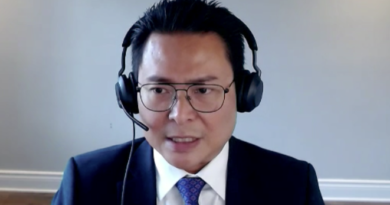Minister Disputes the Effectiveness of Alice Springs Curfew in Tackling Crime
Curfew is an essential short-term response, but should not be the sole solution to the youth crime crisis, as stated by Linda Burney.
Linda Burney, the minister for Indigenous Australians, has shared her thoughts on the three-day curfew imposed in Alice Springs.
On July 8, a public disorder declaration was put into effect by the Northern Territory (NT) Police due to a series of violent incidents in the outback town, including the assault of four police officers by 20 youths.
The curfew was in place from 10 p.m. to 6 a.m. daily, granting police the authority to regulate the movement of people to prevent, stop, or reduce public disorder in the specified area.
Ms. Burney emphasized that while the curfew serves as a critical short-term measure, it should not be the singular answer to the youth crime issue.
“You can’t solve this by just making arrests,” she told ABC News Breakfast on July 9. “The judicial system won’t fix the problem, but collaboration between the community and government can.”
“And that’s very much the way in which I’m pursuing the issues.”
Ms. Burney argued that politics should be taken out of the issue, expressing empathy towards the Alice Springs youth, who, she noted, had been struggling with poverty, poor living conditions, and alcohol abuse.
“I always try to put myself into the shoes of people involved in the situation,” she added.
“If you imagine you’re a 15-year-old Aboriginal person in Alice Springs living in shocking conditions where the poverty is absolutely grinding and you can’t see a future, probably with FASD (fetal alcohol spectrum disorder), then they’re the shoes that we need to stand in.”
FASD refers to the range of conditions caused by exposure to alcohol during pregnancy.
“Everyone’s views are important, everyone’s views should be listened to, but we cannot get away from the poverty, the deprivation, the shocking living conditions and, quite frankly, young people not being able to see a future.”
The comment was echoed by NT Coalition Senator and former Alice Springs deputy mayor Jacinta Price, who said the community’s children and adolescents are “some of our most marginalised.”
“These kids come from town camps and they’re some of our most marginalised.
“We need to look at the problem starting with them before they head down the road toward incarceration and the sorts of behavior we’re seeing carried out on our streets.”
Punitive Measures Are Not The Answer, SNAICC CEO Said
Meanwhile, Catherine Liddle, the CEO of SNAICC, the national voice for Aboriginal and Torres Strait Islander children, argued there is “no evidence that snap curfews like this work.”
She said the government needed to invest into early education and care rather than juvenile diversion activities.
“I do understand the need … to have short-term responses, but this isn’t it. Having curfews in a tool kit for police to use is not a sensible response … We need to be investing into the solutions,” she told ABC News Breakfast on July 9.
“You increase punitive measures, what you get is more crime. That is what the trends show.”
Previously in April, police also enacted a three-week curfew on Alice Springs residents following an extended period of social unrest in the remote community, which saw a teenager died when a stolen car crashed.
At the time, NT Chief Minister Eva Lawler said past experience showed this measure could effectively work as “circuit breaker,” but Ms. Liddle argued they are not the same thing.
“A circuit breaker is significantly different to a curfew,” she added, noting that the circuit breaker in April saw support workers on the street and authorities offering help to families.
“And what [police] found during that period of time was that every child that they came into contact with had a family who said, ‘thank you for coming, let’s talk to you about what we need to do to help our children.’ That was the response that needed to be invested in.”





